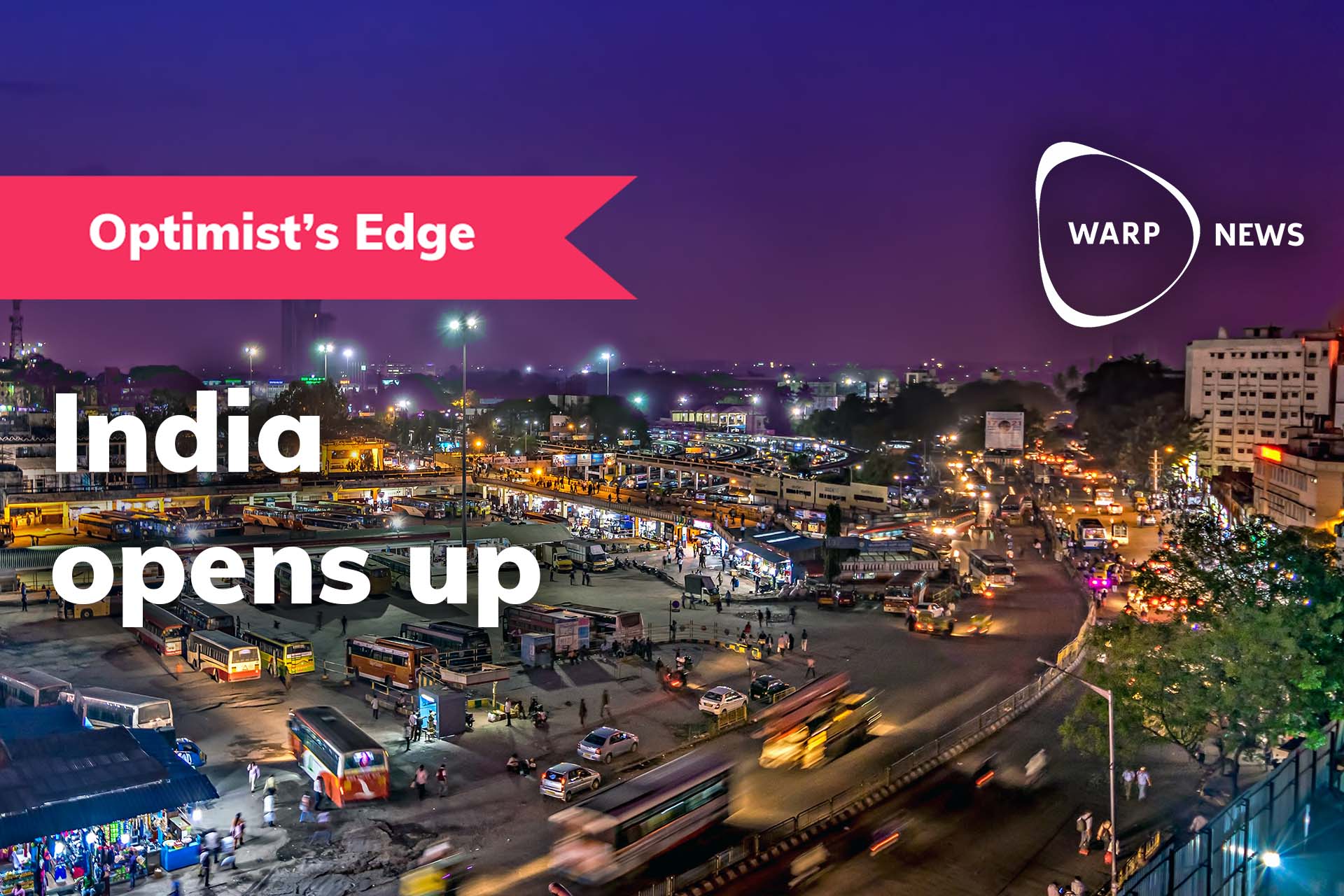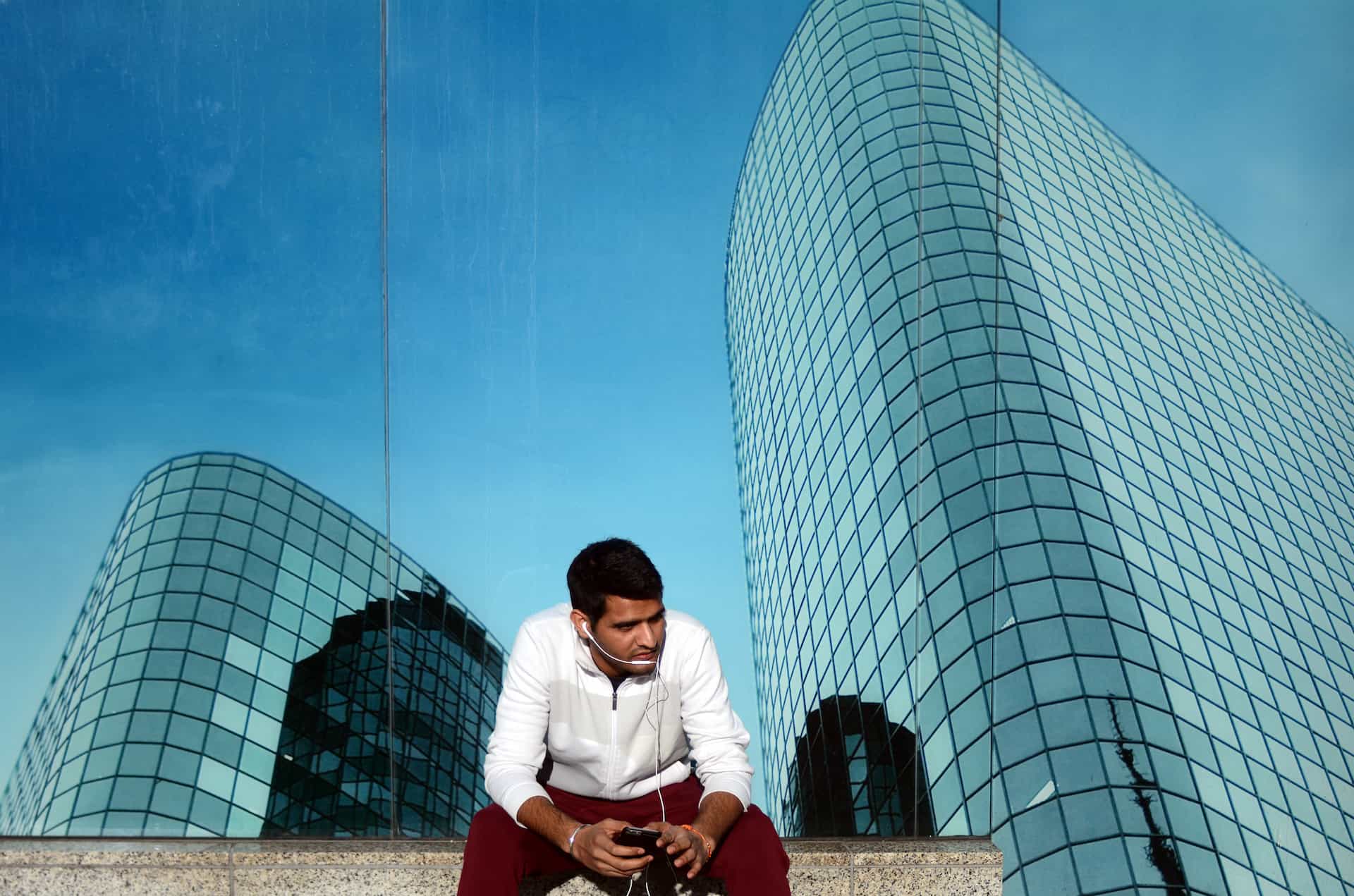
🇮🇳 Optimist's Edge: Billions at stake when India opens up – what will be your role?
India is considered cumbersome and expensive to trade with. But that may be about to change when the free trade agreement is on the agenda again after several years delay.
Share this story!
Summary
📉 What people think
India is considered cumbersome and expensive to trade with. Economic policy is protectionist and foreign companies are subject to both high tariffs and discriminatory regulations. But change may be underway. When the EU and India leaders decided earlier this year to resume negotiations on a free trade agreement, it was a clear signal that there was an interest in opening up the Indian market.
📈 Here are the facts
India is the world's second-most populous country with strong GDP growth and a growing middle class. There is great potential here for European companies in several industries, ranging from products and services in IT, environmental technology, food, and education.
💡 Optimist's Edge
Together, the EU and India – the world's two largest democracies – make up almost a quarter of the world's population. Despite existing trade barriers, trade amounted to 110 billion Euros in 2019, a 50 percent increase since 2010. A free trade agreement would further boost that figure. Having an edge on opportunities in industries and business may give you, as an individual, investor, and entrepreneur, or advisors in various fields, for that matter, an edge.
👇 How to get the Optimist's Edge
Familiarize yourself with the timeline for the EU-India, and US negotiations, delve into the industries and areas we list to see where you can benefit from upcoming exchanges between the world's second-largest population and the cutting-edge skills available in a range of professions and industries.

📉 What people think
Poor, protectionist, and a regulatory nightmare – is the negative economic perception of India accurate? Depending on how you calculate, India has some of the highest trade tariffs in the world. Above all, it is the domestic agricultural sector that is protected. India has also chosen to stay out of the free trade agreements signed by several other countries in Southeast Asia. In addition to high tariffs, the Indian market is characterized by cumbersome bureaucracy and discriminatory regulations. Many people get gray hairs from trading with India, says one person the article's author spoke to.
📈 Here are the facts
However, India may become an increasingly important trading partner for the EU and the US. To begin with, India is one of the world's fastest-growing economies. Before the pandemic, the country had an average GDP growth of 6 percent annually. By 2030, India may have surpassed China as the world's most populous country and Japan as the world's third-largest economy. And speaking of gray hairs, the Indian population is young – one in four Indians is under 14 – in stark contrast to an aging Europe.
A market that is growing super fast
Continued high growth also means that more and more people are being lifted out of poverty. Already today, half of all Indian households are counted as middle-class households, and the figure is expected to increase to 80 percent by 2030.

In addition, in May 2021 came the good news that the EU and India have decided to resume negotiations on a free trade agreement. These began in 2007 but were stranded in 2013 when the parties had difficulty agreeing.
The intention is now clear: they want to see an ambitious free trade agreement that takes advantage of the potential in deepened relations between the regions. The fact that India has also begun negotiations with the United Kingdom and Australia is another signal that there is a willingness to compromise and an interest in opening up the Indian market. As recently as Monday (18:th of October), India and Israel decided to resume negotiations on a free trade agreement, which the countries hope to sign in 2022.
As for the United States, India's largest trading partner, relations are a bit more strained. Former President Donald Trump called India the "tariff king" and criticized, among other things, high tariffs on American cars and motorcycles.
When the US in 2018 chose to impose high customs duties on steel and aluminum, which are important exports from India, India responded by raising tariffs on almonds and walnuts imported from the US. Even though the countries have negotiated the terms since 2018, few believe that a full-fledged agreement is to be expected soon. However, relations with the United States are expected to improve under President Biden. In September, Prime Minister Narendra Modi and President Joe Biden met for the first time since Biden took office, and trade relations between the two countries were one of the main issues for the meeting.

💡 Optimist's Edge
Despite its size, India ranks tenth among the EU's trading partners. This can be compared to China, which has a similar population size but tops the trade league. In other words, there is a huge potential for companies and investments here.
Which industries may benefit most from a possible free trade agreement?
Of course, this depends entirely on what the agreement looks like and which sectors are covered. But let's speculate a bit… On the one hand, it is conceivable that the scope will increase in the trade already taking place today. Exports of, for example, industrial products may increase, while imports of textiles or IT services may also grow.
On the one hand, there is potential for growth in industries where trade barriers are significant. The most prominent example is agriculture. If an agreement can be reached in this area, there will be great gains for European companies that can export food to a growing Indian market and for Indian producers and consumers.
The middle class provides clues about exports
Another way to approach the question of which sectors can benefit from increased trade between the EU and India is to look at which goods and services will be in greater demand. The growing Indian middle class mentioned above means an increased demand for mobile phones, household appliances, and cars, but also services, such as health care, education, and entertainment.
An exciting example of educational exports is the Swedish Kunskapsskolan, which already runs four schools in India under the original Swedish name Kunskapsskolan.
Environmental technology is another sector that may play an essential role in the export of both goods and know-how. India faces an enormous sustainability challenge, and environmental issues were highlighted in particular at the summit in May. Continued high growth combined with an improved environment will require more environmentally friendly energy sources and management of the country's enormous landfills and rubbish dumps.
A chaotic traffic situation and bad air are other problems that many Indian cities are involved in and where, for example, Swedish companies can contribute with complete solutions both in terms of technology and know-how.

👇 How to get the Optimist's Edge
There are a number of different things you can do to get an edge.
- Stay up to date on how the negotiations are going
- Establish collaborations right now
- Invest in companies that can benefit from an agreement. Keep an eye on mobile phones, household appliances, and cars, but also services, such as health care, education, and entertainment, are central in this context, as well as environmental technology.
- Attend India-Sweden Innovation Day, October 26 (online ) and
Time for India, breakfast seminars in Stockholm, Luleå, Gothenburg, and Malmö November 8-11.
And remember: Even in a worst-case scenario where negotiations stall, India's growing economic importance, as well as geopolitical factors, suggest that the country will become an increasingly important trading partner in the future. Research has also shown that free trade agreements have an effect – even before they have been signed! The signal that "you are welcome to do business here" is so important that trade flows often increase even before a possible agreement enters into force.
Read more:
- Joint statement by EU and India leaders, May 8, 2021
- EU - India Trade Relations: Assessments and Perspectives, Report from the European Parliament, September 2021
Organizations that promote trade between Sweden and India:
You now have an advantage because you have gained this knowledge before most others –